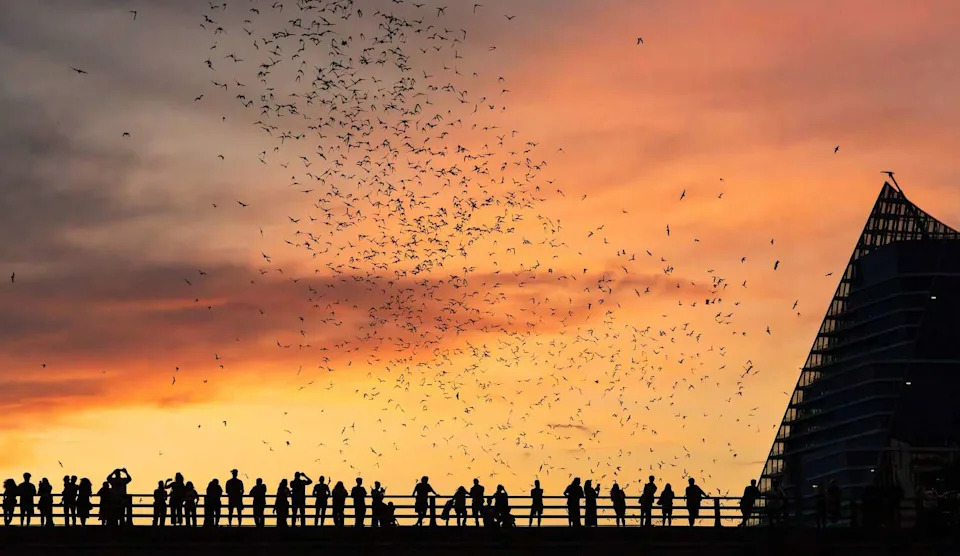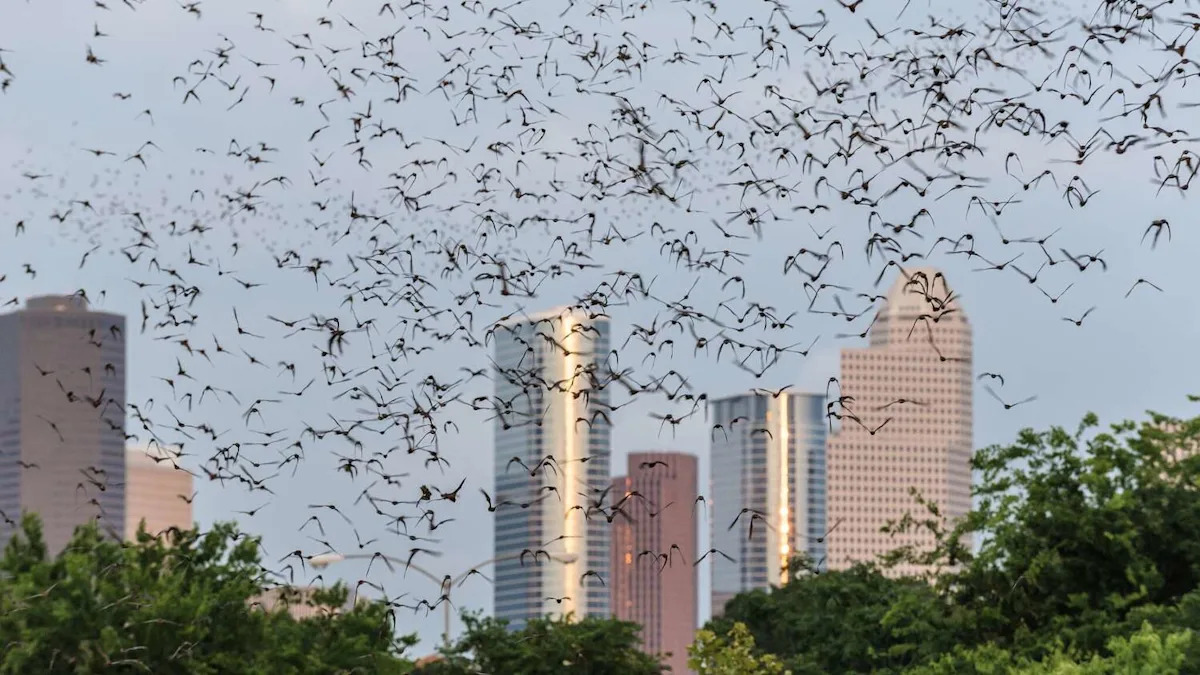Spooky season means seeing more bats than usual out in the streets. There’ll be paper and plastic bats hanging from front porches and taped to railings as part of Halloween decorations, and surely the infant down the block will be fitted in a bat costume for trick-or-treating. Across the U.S., Halloween is truly the bat’s time to shine.
But in Texas specifically, bats are as common as rats in New York City and gators in bayou country, even getting a shoutout Oct. 26 on CBS Sunday Morning. Maybe you’ve wondered just why there are so many of those nocturnal creatures hanging around in major Texas cities, and why the Lone Star State has the highest bat population of any state with 32 species currently residing here.
Well, the answer is that bats feel right at home in Texas’ ecosystem, with some species living here full-time. The most popular bat, the Mexican free-tailed, migrates to the Lone Star State, arriving from the south sometime around February and exiting by November. This species feeds on the numerous insects that appear in the warmer months, and the heat provides necessary incubation for mothering bats.
In Texas, folks will find common Mexican free-tailed bats underneath bridges in populated urban centers. This is because the structure of these bridges creates a perfect habitat for bats who’ve migrated up to the Lone Star State. Back in the early 1980s, the city of Austin renovated the Congress Avenue Bridge and, as a result, formed an incredible habitat for these bats. An estimated 1.6 million bats regularly lives at the Congress Avenue Bridge, making it the largest urban bat colony in the world.

Bat watchers crowd on the Congress Avenue bridge in Austin, Texas, as bats fly overhead with the city skyline behind them. (Getty Images)
“Few people understood how valuable the bats were, and many feared them,” wrote the Texas Parks & Wildlife Department in an explainer on the Congress Avenue Bridge. “It took a lot of effort by Bat Conservation International and other bat-friendly folks to help turn the tide of public opinion.”
Today tourists and locals alike swarm to the bridge when bats are living there-typically between March and November-to catch a glimpse at thousands of bats flying into the sky beside the span. Similarly, give or take 250,000 bats reside at the Waugh Drive Bridge in Houston, and multiple other top viewing areas are spread out across both major urban areas and parts of the Texas Hill Country.
The largest bat colony period is also in Texas, at Bracken Cave Preserve northeast of downtown San Antonio. There, you can find upwards of 15 million Mexican free-tailed bats.
In recent years, wildlife experts have raised the flag over white-nose syndrome, a kind of fungal growth that can show on hibernating bats and thus prove fatal. A 2021 study found that 90 percent of three bat species have been killed off by white-nose syndrome, though the Mexican free-tailed bat has not been as heavily impacted.
But the big question every Halloween: Can you see bats right now in Texas? Well, maybe. The Houston Parks Board and others say that bats that call Texas home typically move back south as cold fronts begin to arrive, usually around October and November. So keep your eyes out around those urban bridges for a potential Halloween surprise.
More News
Politics | Latina Democrat enters 2026 Texas governor battle
Gulf Coast | Strange boxes found on Texas beaches carry a toxic secret
History | How a 1973 homicide led Houston to a notorious serial killer
Money | Here’s how much you need to live comfortably in Houston
For the latest and best from Chron, sign up for our daily newsletter here.
This article originally published at How to see bats in Texas during the spookiest time of year.

